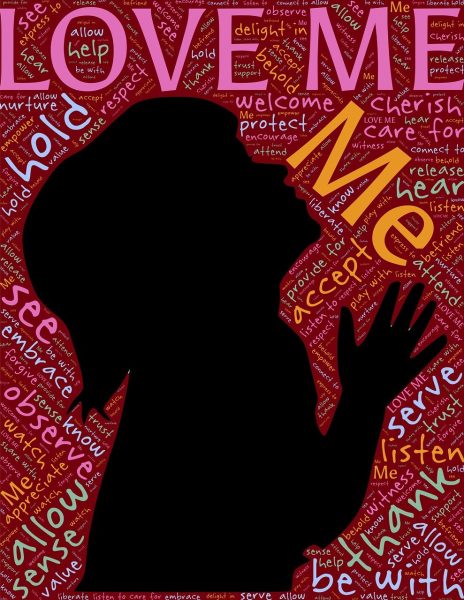Are We Helping One Group at Another’s Expense?

Fostering inclusivity is essential, but not when it has the ability to take away from other marginalized groups’ progress and success. Women athletes have overcome many hurdles and obstacles when it comes to being allowed access to athletic opportunities.
It wasn’t until Title IX became law in 1972 that women were given equal rights in both education and athletics, and it was a hard-fought struggle to even get to that point.
The debate over who should be allowed to compete in women’s sports has been fueled recently by high-profile trans athletes joining women’s athletic divisions.
Lia Thomas, a trans woman swimmer for the University of Pennsylvania, recently became the first transgender athlete to win an NCAA swimming championship. Thomas beat her closest competitor, Emma Weyant by 1.75 seconds.
Many women who competed against Thomas, including UVA’s Weyant, felt that the race was unfair because of Lia’s biological advantages.
Riley Gaines, who tied Lia Thomas for 5th place in a separate 500-meter race, has spoken out against the NCAA policies regarding the participation of trans athletes which she deems to be unclear.
“We have to let people know as a group that a majority of us female athletes — or females in general — are not okay with this. We’re not okay with the trajectory of how this is going or how it could end up in a couple years,” said Gaines.
Since changing to compete in the women’s swimming division as a junior in college at UPenn, Thomas’ rankings and standings have substantially improved.
Last season, in the men’s NCAA 500 yd freestyle race Thomas placed 65th, in the women’s division this season she placed first. An even starker change was in the 200-yard freestyle race where Thomas increased from her 554th place status in the men’s division to notching a 5th place win in the women’s division this year.
To voice concerns about trans athletes’ competing comes with the risk of backlash in today’s society. Many women athletes throughout this country are concerned about this issue, but they are often afraid to speak out at risk of appearing transphobic. Transphobia is never okay but it is also not okay to shut down conversations and limit voices.
While the number of trans athletes is relatively small, the debate over fairness will only grow in years to come, making it extremely important for women athletes to speak their minds and for us to hear them out.
The retired star tennis player and an advocate for liberal and lesbian causes, Martina Navratilova has taken a stance in this discussion.
“I played against taller women, I played against stronger women, and I beat them all. But if I faced the male equivalent of Lia in tennis, that’s biology. I would have no shot. And I would have been livid.”
It is also important to hear out the voices of trans athletes such as Andie Taylor, a trans woman runner who is also trying to figure out how to address this complex situation.
In a New York Times opinion piece, Taylor describes that she started logging her running times after transitioning and undergoing hormone treatment, and she found that they actually improved.
She thinks this is likely due to some physical advantages that she possesses from her many years as a man.
“My compromise is that I compete as a female but only in races where I know I won’t make the medal podium or win money. I want to win. But I only want to win if I know it’s fair.”
Taylor closes by saying, “I exist in this chasm between those who believe I am a cheater who is hurting women and those who insist that merely identifying as a woman is a right to compete as a woman.”
Recently, the debate over the inclusion of trans athletes has been brought to high school settings such as Canton High School in the neighboring state of Connecticut.
In Canton High School, award-winning high school runner Chelsea Mitchell, described her experience competing with trans athletes in an op-ed originally published by USA Today.
“I’ve lost four women’s state championship titles, two all-New England awards, and numerous other spots on the podium to biologically male runners. I was bumped to third place in the 55-meter dash in 2019, behind two biologically male runners,” said Mitchell.
Her personal experience racing against trans athletes should make everyone pause when we jump to the naturally good intention of wanting to be inclusive to everyone and pose the question, does inclusivity ever go too far if it is at someone else’s expense?
However, not allowing trans athletes to actively compete could no doubt be damaging to their mental health and this should be a real concern to everyone. According to a national study by The Trevor Project, 2 out of 3 transgender and non-binary youth are reporting symptoms of a depressive disorder.
It doesn’t help that states around the country are passing laws that completely bar trans athletes from competing at all levels of sports. These hyper restrictive laws do not bring trans athletes’ perspectives to the table and do not consult alternatives to an outright ban.
That said, tackling this issue is a balancing act of great proportion and it is very difficult to come up with a solution that would appease most everyone so many states are seeking outright bans as the only, albeit difficult, way to move forward.
Alternatives to outright bans include creating a separate athletic division for trans athletes to compete against each other, having more solid rules about what hormone levels one would need to compete, or conducting testing about how much transitioning really affects athletic performance.
But we as a society can only start to look for solutions and alternatives to outright bans of trans athletes in sports if we all listen to each other and stop trying to silence each other with derogatory terminology such as the acronym TERF.
This stands for Trans Exclusionary Radical Feminist and has been used by many Trans activists to dismiss individuals, specifically women, that are concerned about what the inclusion of trans athletes could mean for women’s sports.
A complex issue requires complex solutions. Let’s make sure we hear each other out and find middle ground to then tackle this new and developing issue in our country.






